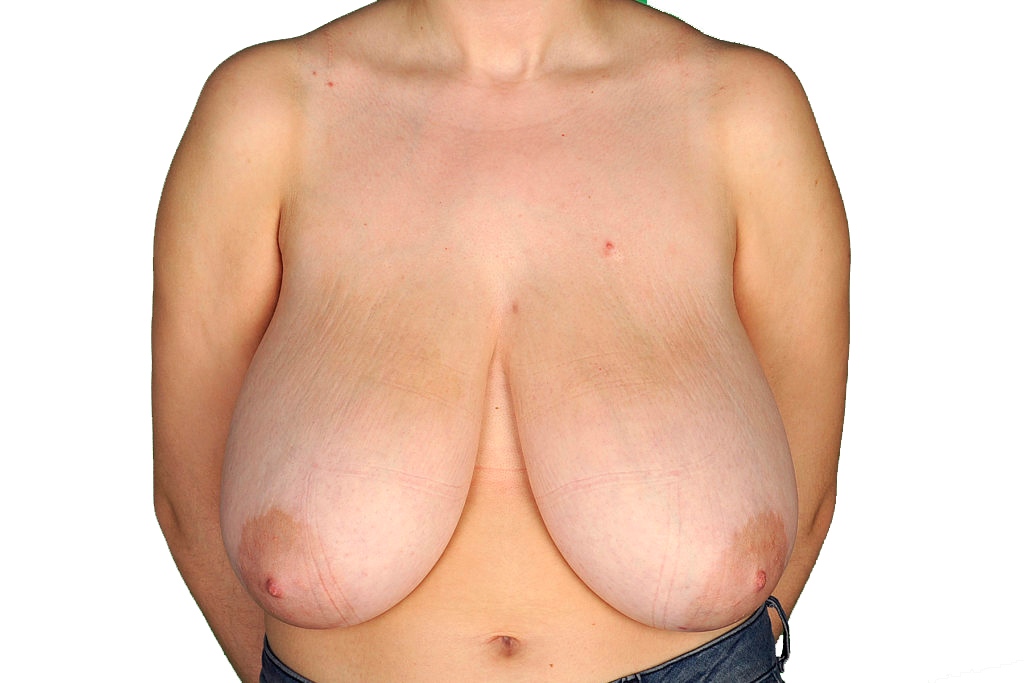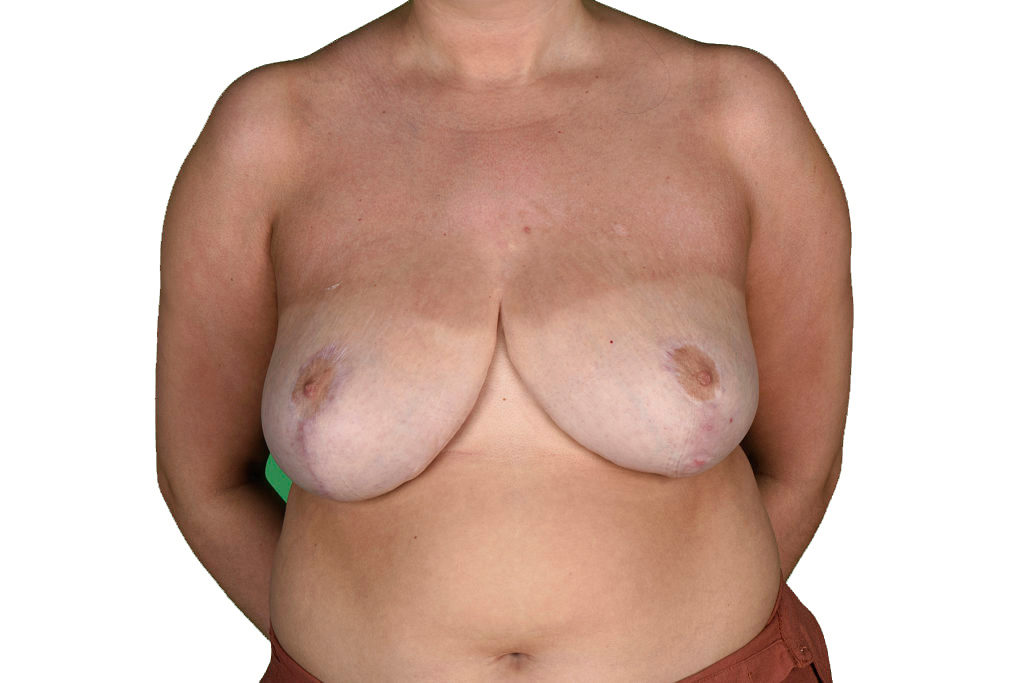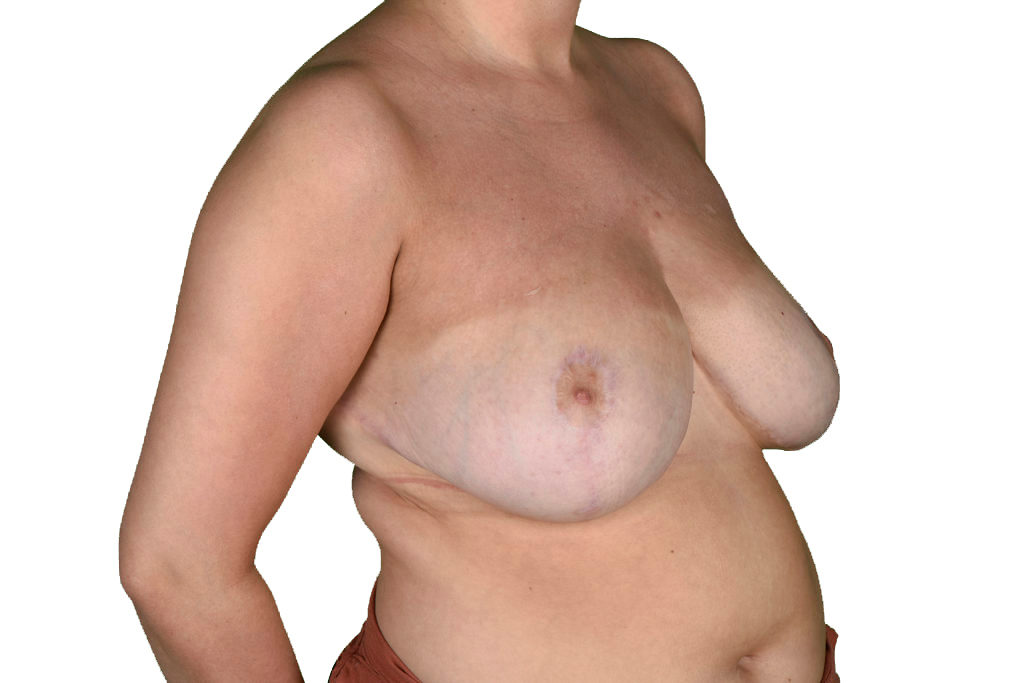



Overly large breasts cause both psychological and physical problems, the weight of the breasts dragging across the shoulders and down the back often accounting for back pain. Bra straps bite into the shoulders and rashes occur under the breasts in the hot weather. Exercising is made impossible or difficult, creating a vicious circle of unfitness, and self-esteem may be sapped by continual remarks that are made, whether ‘jokey’ or abusive. It is hardly surprising that of all cosmetic procedures, breast reduction has the highest patient satisfaction rate.
Surgery is carried out under general anaesthesia (asleep). Mr Erel will draw on the breasts before the operation and use those markings to carefully remove excess skin, breast and fatty tissue at surgery.
The nipple-areola complex (the areola is the brown area round the nipple, which is often reduced in size during surgery) is raised to a higher level and the skin closed round and below it (vertically) and then for a greater or less distance horizontally in the fold under the breast. The horizontal extent depends on the amount of reduction: sometimes just a vertical scar is produced. With exceptionally large breasts the nipple-areola complex (N.A.C.) can be removed and reapplied as a free graft at the end of the procedure.
Absorbable stitches are used to close the skin and a dressing is applied.
You will notice a polythene tube (drain) running to a vacuumed bag on each side to take away any excess ooze. These will be slid out, generally with minimal discomfort, before you go home after one or two days.
Pain is variable but there is always some initial discomfort and pain relief is given and continued at home where you must rest and take life gently. You will be reviewed at the Hospital after one week and 6 weeks after surgery. The breasts are a bit swollen at this stage, continuing to settle over 2 – 3 months and the scars are red, fading over a 9 – 12 month period. The skin may be numb but generally recovers over 3 – 4 months. The nipple area may also be numb, gradually recovering fully or sometimes remaining permanently numb. Nipples initially may be over sensitive which usually settles with time. Erection of the nipple is usually unaffected, except on free N.A.C. grafts when erectility and feeling are both permanently lost.
You should allow at least 3 weeks off work (depending on what you do), preferably 4 weeks. Lower body exercise can be started gently after 1 month, energetic upper body movement after 2 months.
Surgery does not make you more likely to get breast cancer and it is still possible to feel for lumps afterwards and to have scans, although these are a bit more difficult to interpret. If you have a family history of breast cancer, scans and testing for the breast cancer gene should be carried out first. Breastfeeding after breast reduction should not be expected although, surprisingly, it is occasionally possible (not with free grafts).
Do not expect precise symmetry of the breasts either in terms of volume (size) or nipple position: most women’s breasts are slightly different. Naturally, Mr Erel will aim to produce as good a match as possible. Sometimes a second procedure, generally under local anaesthetic as a day case, is required to trim any slight excess (dog-ear) at the inner and/or outer end of the breast fold scar or to revise the closure of a vertical scar repair. The breast shape after a vertical scar repair takes 9 – 12 months to settle.
Problems, which Mr Erel would carefully explain to you, include the risk of a general anaesthetic, getting a clot in a calf vein (Deep Vein Thrombosis – DVT), bleeding, infection, scar misbehaviour (stretching/thickening/poor fading), slow wound healing and trouble with the blood supply to the N.A.C.
Your Body Mass Index (BMI) which is a height/weight ratio, would need to be less than 30 before surgery and if you smoke you would need to stop completely for minimum 6 weeks in advance of surgery. Both these are necessary for the risks of surgery to be acceptable.
In summary, breast reduction is a good operation (the usual aim is for a B or C cup) with a high satisfaction rate both psychologically and physically. However, it is a major procedure and you must make enough space in your life for an adequate recovery
